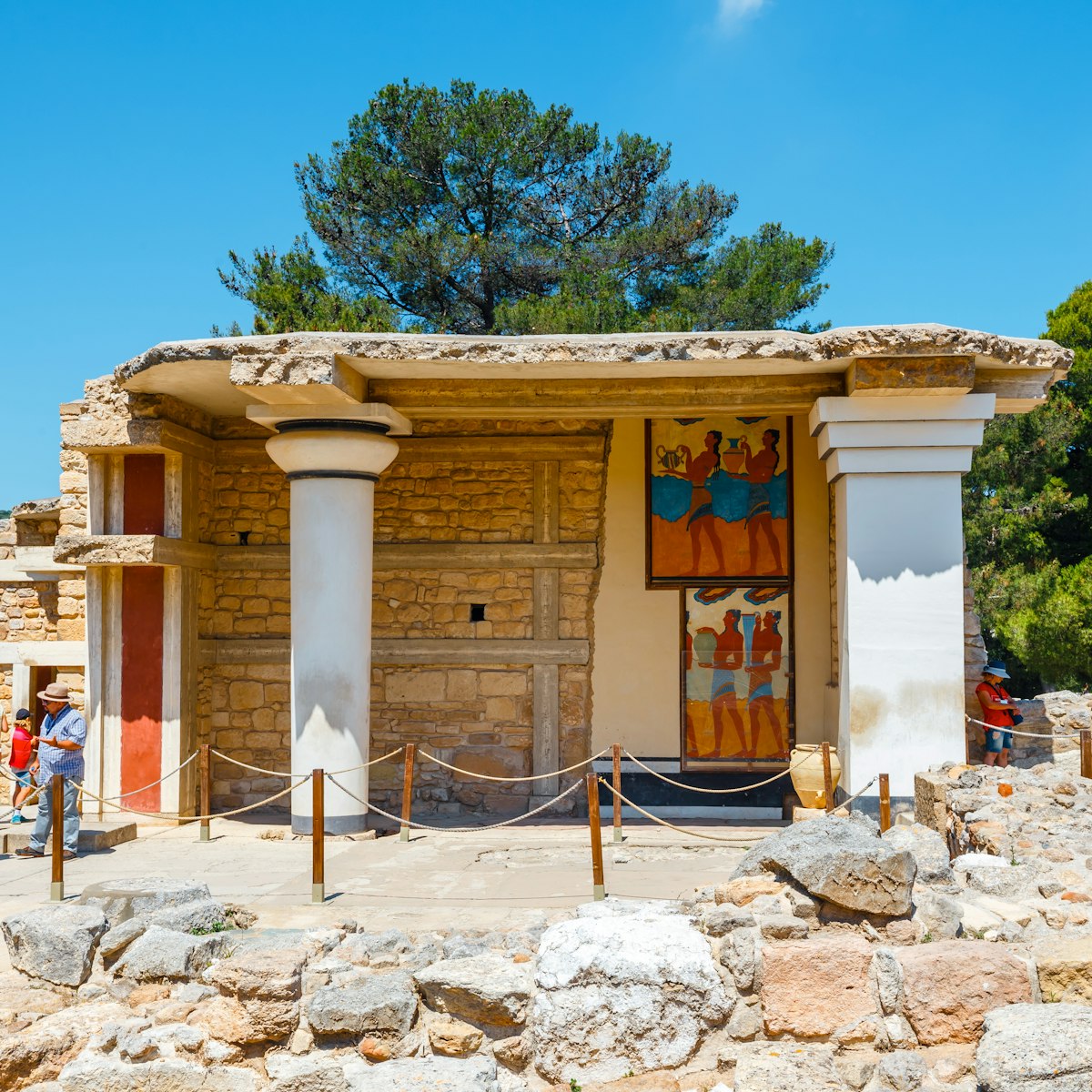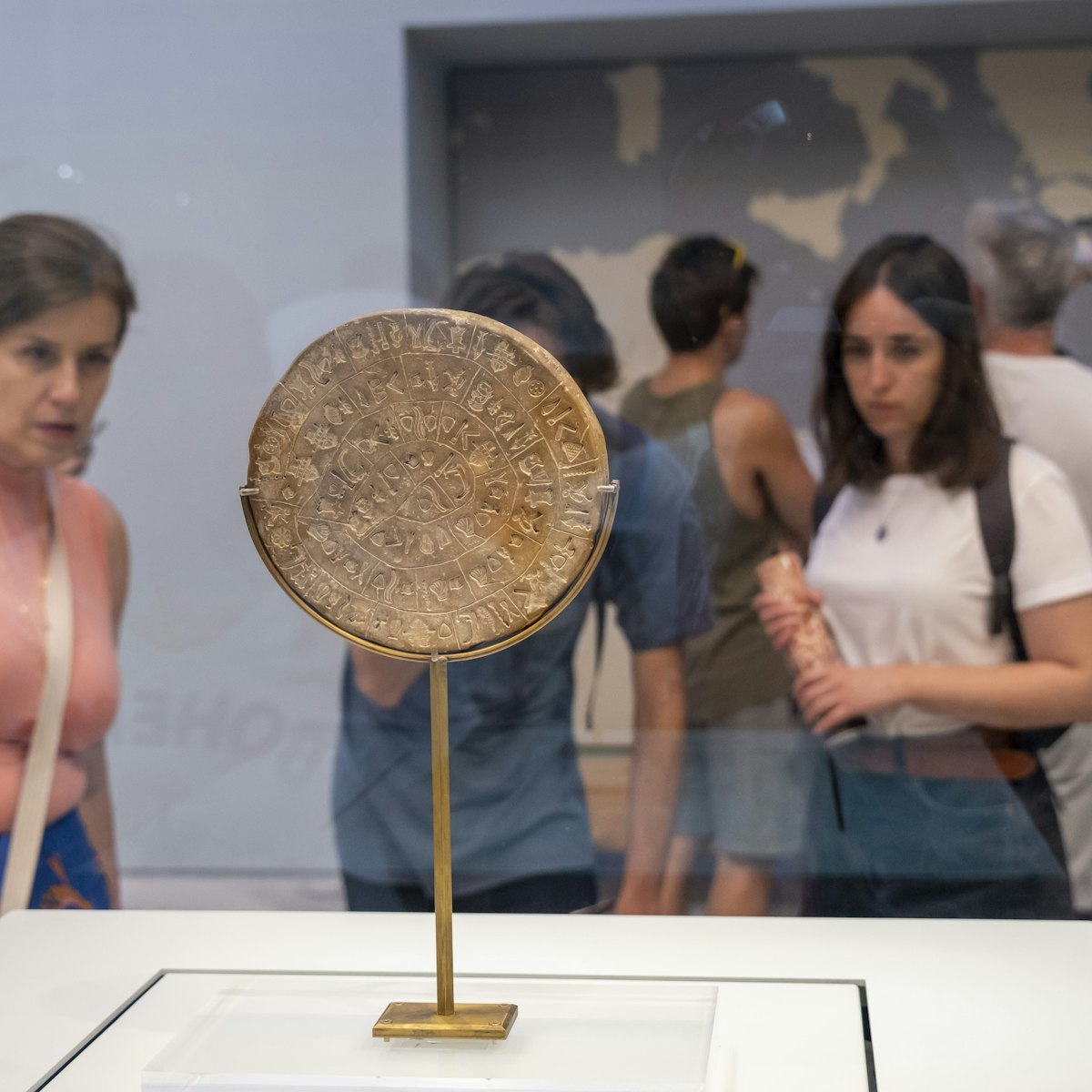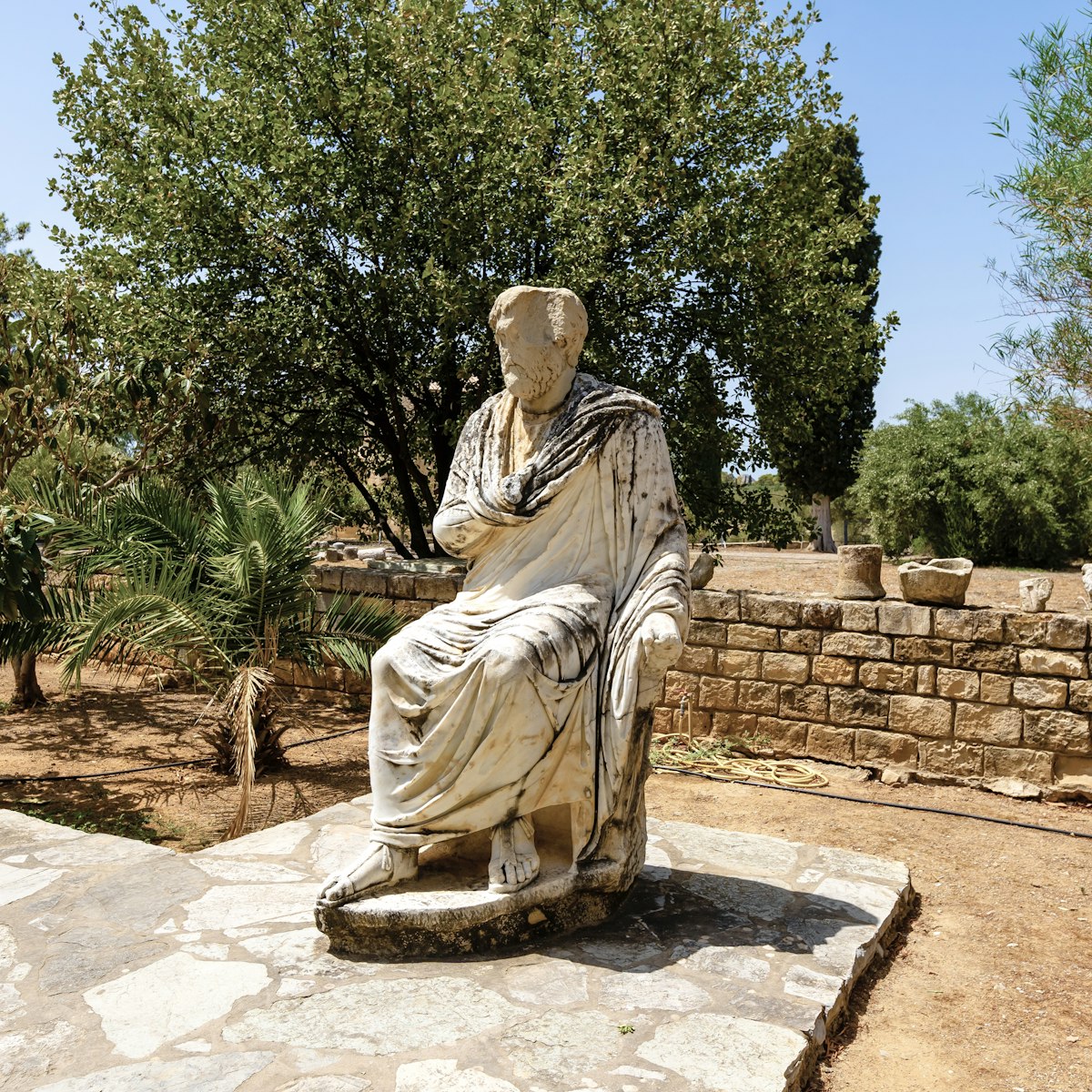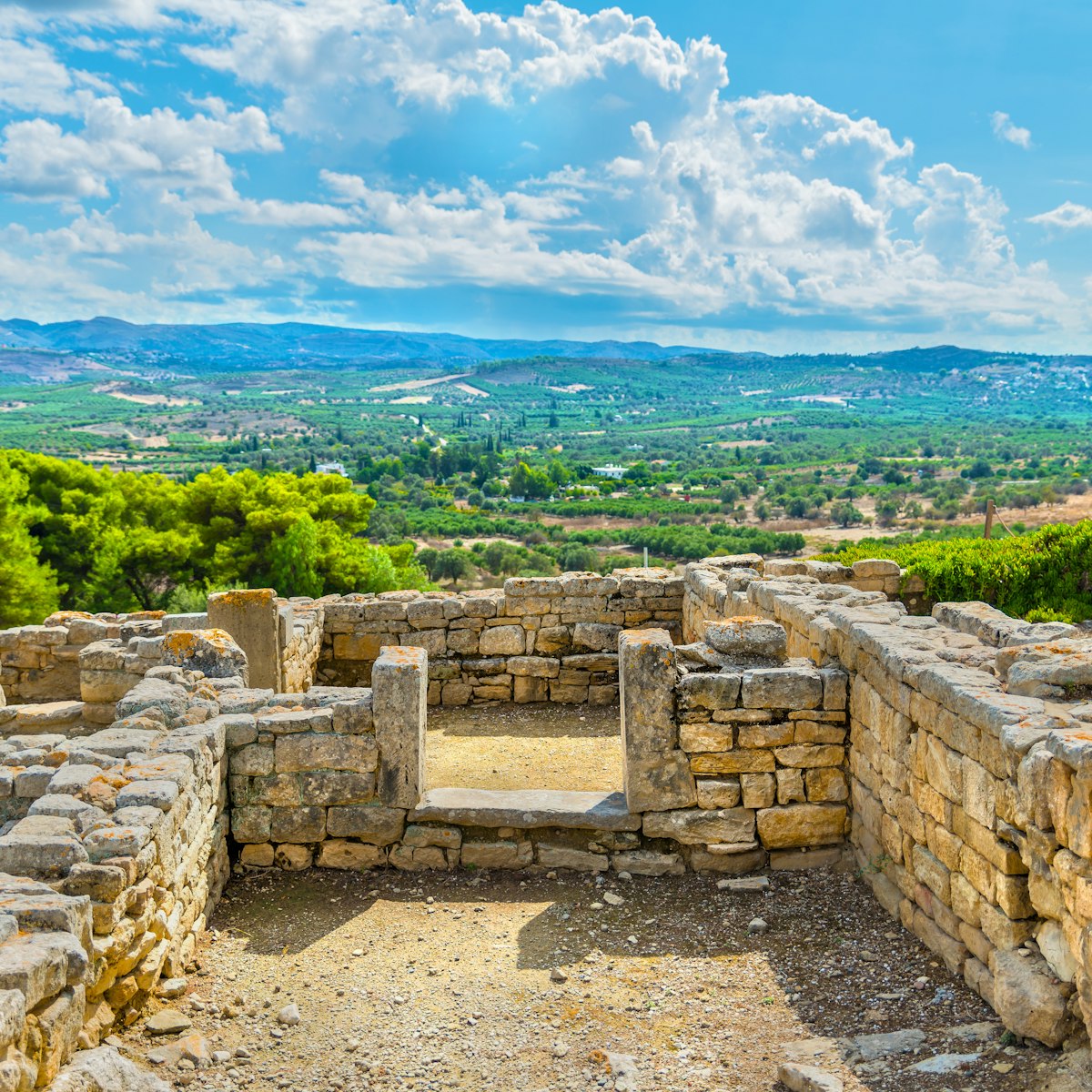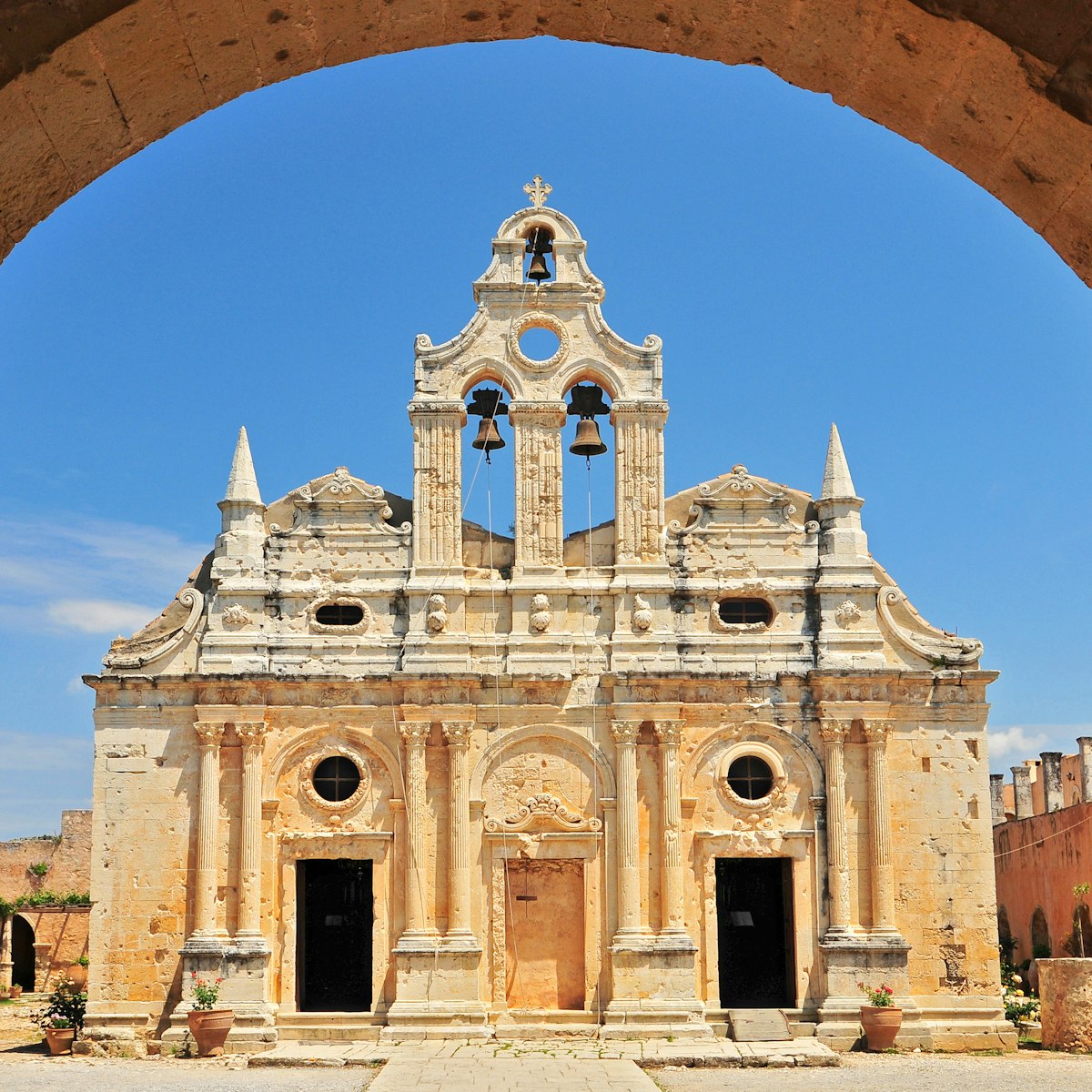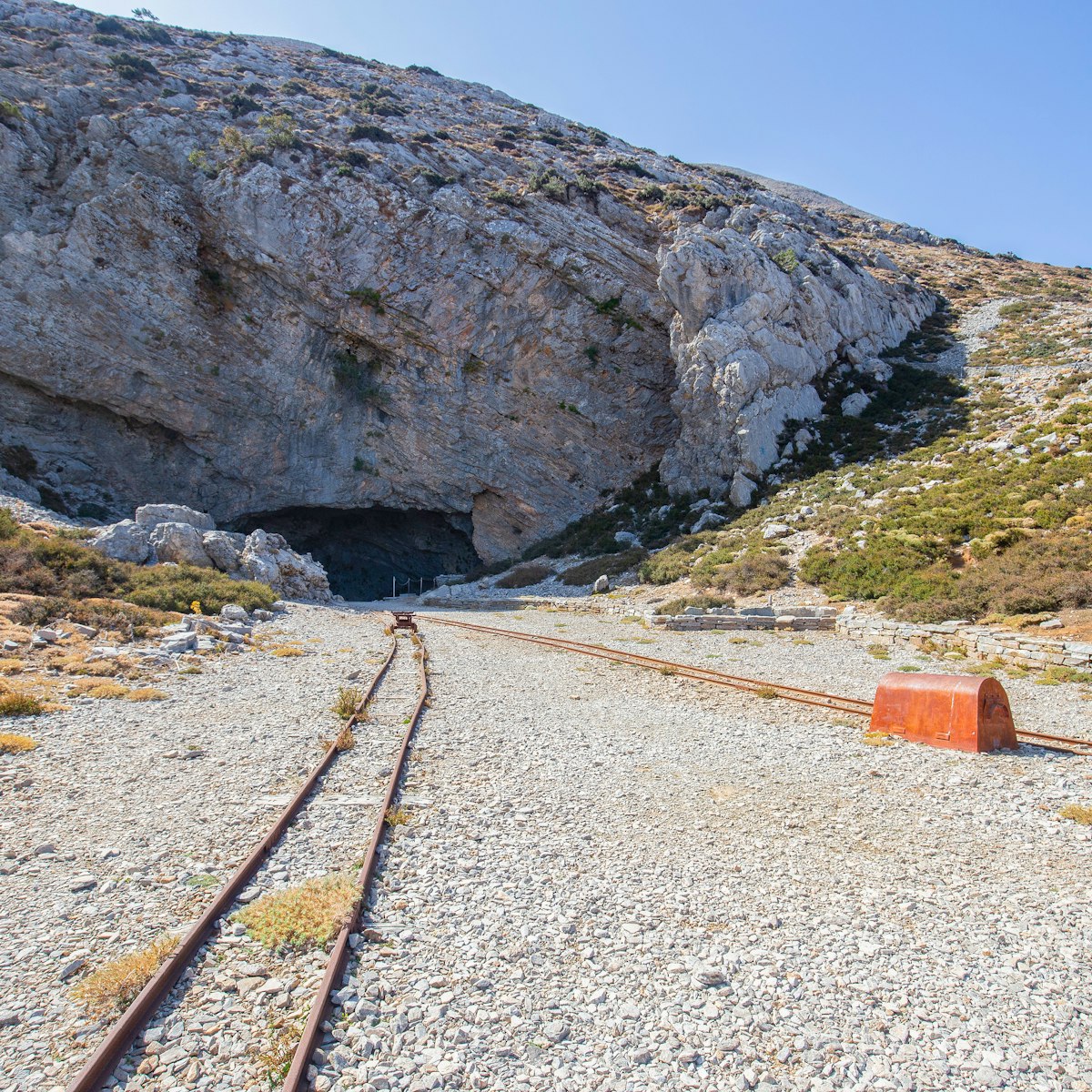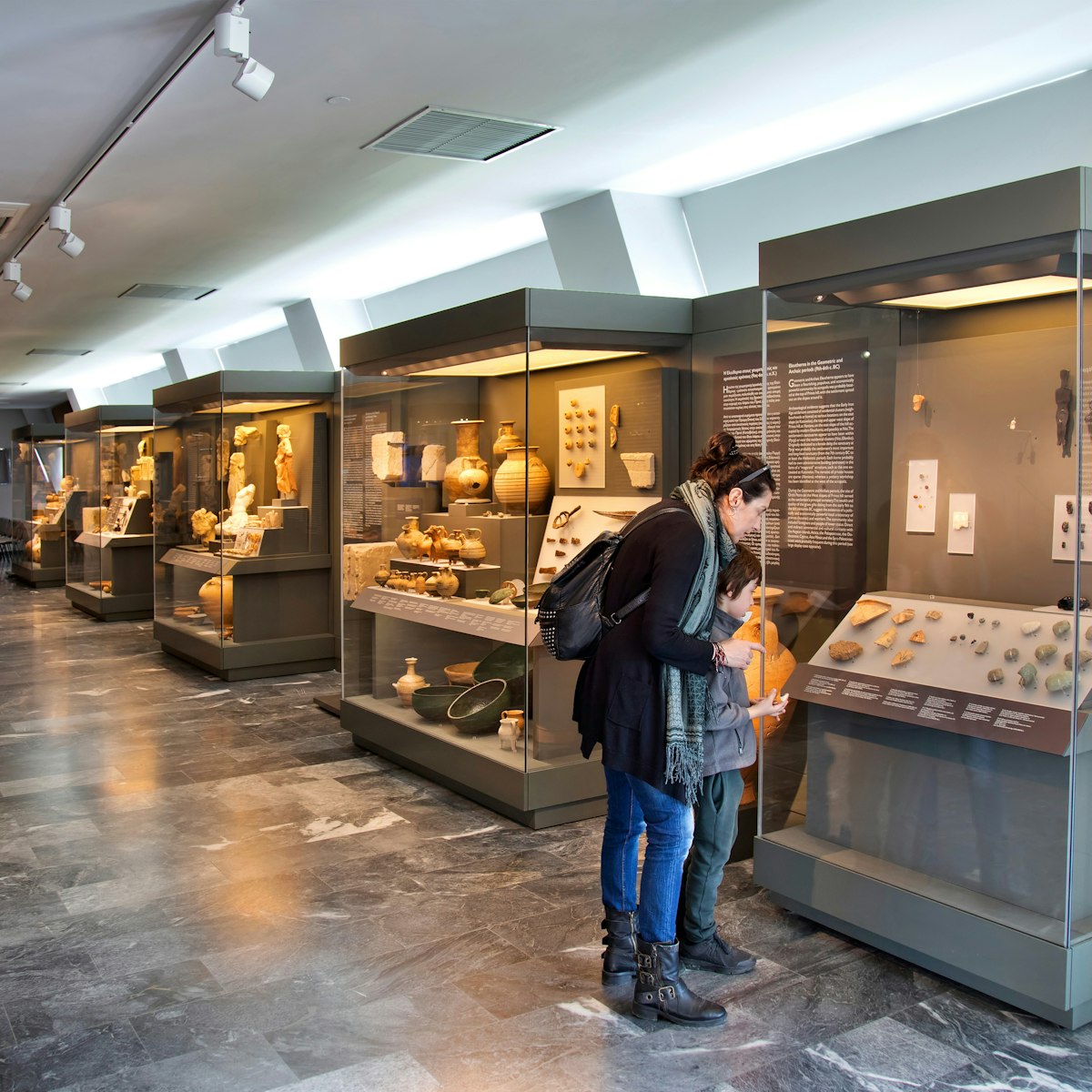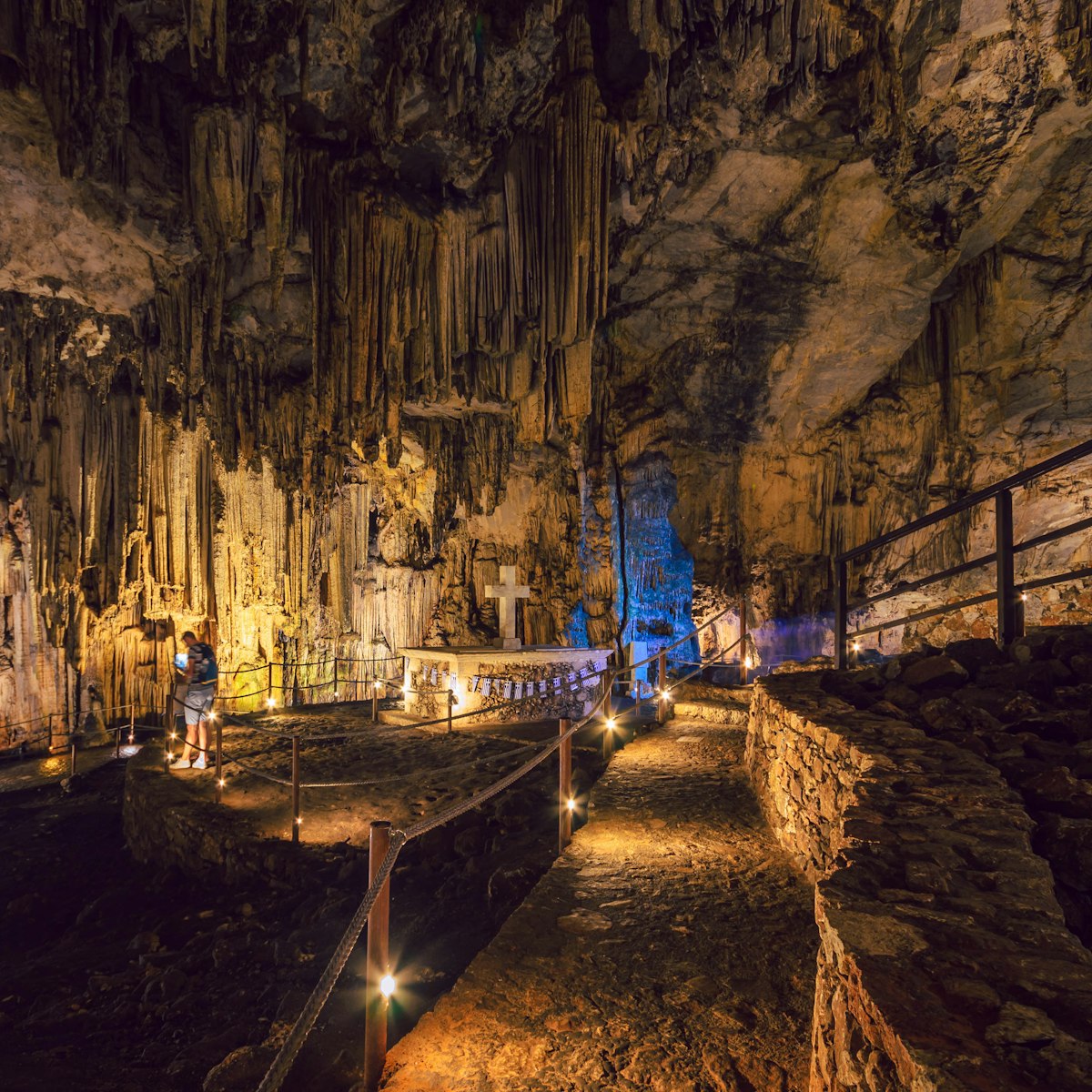In an enchanting spot 3km west of Phaestos, Agia Triada encompasses vestiges of an L-shaped royal villa, a ramp once leading out to sea, and a village with residences and stores. Built around 1550 BC, Agia Triada succumbed to fire around 1400 BC but was never looted. This accounts for the many Minoan masterpieces found here, most famously the Agia Triada Sarcophagus, now a star exhibit at the Heraklion Archaeological Museum.
Unfortunately, the site is not very visitor friendly, as there's no labelling to be found. On the plus side, it drips with historic ambience and rarely sees crowds.
Past the entrance, the ruins in front of you are those of the palace, with structures arranged along two sides of a central courtyard. The Byzantine chapel of Agios Georgios, on the left, has some beautiful frescoes (ask at the ticket booth for the key). To the right of the palace is the village area, with the cemetery (closed to visitors) beyond the fence.
To your left, as you go down the stairs, are the ruins of a Minoan house, with a shrine dating from the early 14th century BC just behind it. It once featured a frescoed floor painted with octopuses and dolphins, also now at the archaeological museum in Iraklio. Beyond here is the paved central courtyard with the residential wing on the right beneath a protective canopy. The west wing, at the far end of the courtyard, is a maze of storage rooms and workshops; the ‘Chieftain Cup’ was found in one of them. One of the most beautiful rooms is in the northwestern corner: called the fresco room, and lidded with a modern cement ceiling, it has fitted benches, alabaster walls and gypsum floors.
A ramp running along the northern side of the palace is thought to have led all the way to the sea (which was at a much higher level then), hence the name given to it by archaeologists – Rampa al Mare. It leads up to the village area, with the marketplace and residential buildings. Of special interest here is the row of stores that were once fronted by a portico.
On the other side of the fence, beyond the stores, is the cemetery, dating from around 2000 BC, with two tholoi (beehive-shaped tombs). The famous sarcophagus decorated with funereal scenes was found here.
The signposted turn-off to Agia Triada is about 500m past Phaestos on the Matala road. There’s no direct public transport to the site, so either walk 3.5km or try hitching a ride from Phaestos.
